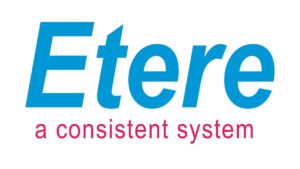
Mark Hasselmann,
Product Manager OpenMedia portfolio
Business agility has become one of the most talked about organizational capabilities of recent years. Indeed, the ability to embrace new ways of thinking and reinvent businesses at pace and scale has become essential to success. Research suggests, for example, that the most agile companies outperform their competitors in terms of revenue and profitable growth by a factor of 2-3 times. The bottom line is there can be no doubt that agile business practices drive results across the organization.
But what does ‘agile’ represent? The Agile Business Consortium, for example, points towards “agility in an organization’s culture, leadership, strategy, and governance that adds value to all stakeholders who operate in uncertain, complex, and ambiguous environments.”
In practical terms, agile businesses can respond to external and internal opportunities and risks quickly, adapting faster and remaining customer-focused – key qualities in today’s fast-paced digital economy.
Fortunately, compared to just a few years ago, more businesses have direct experience of the role, challenges, and benefits of an agile model than ever before. Given the COVID-19 pandemic, this is to be expected – organizations had to move quickly, focusing on core business activities, collaborating online, and innovating to solve problems they’d never experienced before. Among the varied benefits that came as a result, many organizations achieved record technology and process implementation times as they rushed to deploy new solutions to keep their businesses alive. At CGI we want to be able to detect trends and realize those for our clients. We are setting up lean startup workflows to kick off development fast and constantly monitor feedback on our innovations. Misleading targets can be corrected with shorter reaction times and priorities can be adjusted due to high transparency within our organization and the well-cultivated alignment between Management and Development Teams.
In addition to this acceleration in decision-making and the assurance of maximum transparency to support alignment and collaboration across all levels and departments, there have also been significant advances in leadership. The rebuild of governance around new organizational structures and a cultural change support a growing trust in people - from all directions, as management and staff have to adopt new ways of working.
As part of our transition after the merge of OpenMedia into CGI, we invested a lot of effort to train and coach our members in new ways of working. We re-shaped our agile processes, increased transparency, and pushed interoperability of our teams in all areas (from management, over implementation, and project teams to support and development teams). This complete vertical and horizontal consistency assures the understanding of our product vision and provides possibilities to decentralize decisions – as we are all aiming at the same big picture and understand the business needs. Constant offerings for training, internal working groups, and communities of special topics ensure a dynamic view of necessities and possibilities. New collaboration ideas and growing alignment lead to a new culture and mindset within an organization. And this in return supports the intrinsic motivation of our colleagues.
Agility fuels resilience
Having experienced first-hand the benefits of business agility, and, in some cases, its crucial role in adapting to rapid, existential challenges, many successful organizations also view agility through an additional lens: how to become more resilient.
In the current challenging economic climate, this is even more relevant. Armed with the individual and collective lessons learned from the pandemic, for example, organizations are now focusing on sustaining progress and becoming more resilient. In doing so, they should focus on three key priorities: energy, security, and development.
In particular, drive, positivity, and energy are required to fuel and maintain the changes required to initiate and sustain business agility. This requires that organizations operate in a safe and secure ecosystem that provides a foundation for ongoing transformation, enabling individuals and teams to build the capabilities that allow them to thrive.
In doing so, they can address a wide variety of organizational objectives, from transforming for net zero, and delivering on environmental, social, and corporate governance (ESG) goals to redesigning value chains and shaping the future of work, among many others.
Clearly, technology and data play an important role as commercial and government organizations continue to focus on improving their business and operating models. Recent research has revealed that organizations have modernized 37% of their applications, with 72% of this implemented on a cloud foundation. What’s more, they forecast that 72% of their applications will be modernized within the next 2-3 years.
This accelerating pace of tech infrastructure modernization is crucial, not least because it helps organizations deliver a faster time to value. The good news is that the burgeoning SaaS solutions industry will only accelerate the process even further, giving businesses the ability to quickly adopt new technology services without the need for significant capital outlay.
Agile digital leaders
In addition, today’s agile digital leaders understand the increasingly strategic role played by partners and business ecosystems. Whether they help develop new business or operating models, augment teams with flexible resources or bring prebuilt accelerators and best practices, partners bring the speed and expertise required to be agile that is virtually impossible to replicate in-house.
Among the main challenges faced by digital leaders when building agility into their culture, processes and technologies are creating value and growth. Although many executives (87%) say they have a strategy in place to become more digital, for example, only 20% say they are producing the expected results.
To address this gap, effective digital leaders pivot from predicting and planning to sensing and responding. This requires the ability to connect strategy, operating model, and execution and create greater transparency and alignment. In doing so, they must understand the need to sense and respond to change quickly – they can only do that successfully when they have designed their business and operating models to be agile.
Faced with the need to develop an agile business ethos, organizations must also recognize they cannot do this alone. Building a network of strategic partners is essential to long-term success and building the ability to adapt at pace and scale.









